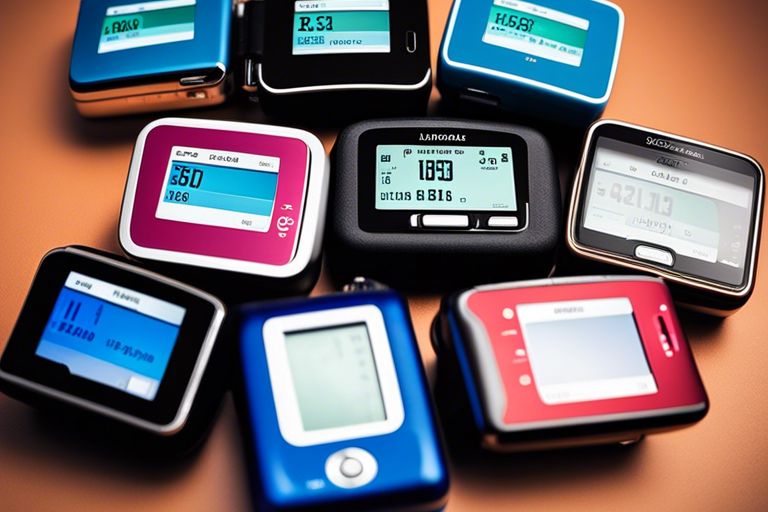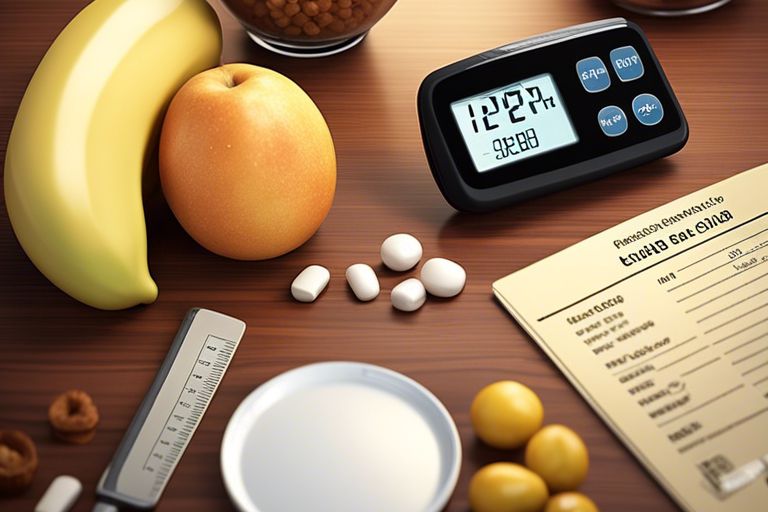In managing Type 1 Diabetes, knowing how to recognise and treat hypoglycaemia is crucial. Low blood sugar levels can be dangerous and require prompt action. This guide will empower you with the knowledge and steps needed to identify the signs of hypoglycaemia and take appropriate measures to treat it effectively. By understanding the symptoms and having a clear plan of action, you can confidently navigate and manage hypoglycaemic episodes in Type 1 Diabetes.
Key Takeaways:
- Hypoglycemia symptoms: Recognise signs such as shakiness, sweating, blurred vision, and confusion.
- Treatment: Consume 15-20g of fast-acting carbohydrates like glucose tablets or juice to raise blood sugar levels quickly.
- Re-check blood sugar: Wait 15 minutes after treatment and re-check blood sugar levels to ensure they are rising.
- Long-term prevention: Maintain a consistent eating schedule, monitor blood sugar levels regularly, and adjust insulin doses as necessary with the guidance of a healthcare professional.
- Emergency situations: If hypoglycemia leads to unconsciousness, administer glucagon injection or seek immediate medical attention.
Recognizing Hypoglycemia
Identifying the Symptoms
Recognizing the symptoms of hypoglycemia in type 1 diabetes is crucial for prompt treatment. Common symptoms include sweating, trembling, hunger, confusion, weakness, and palpitations. It is important to be vigilant and act quickly if any of these symptoms occur.
Knowing the Risk Factors
Understanding the risk factors associated with hypoglycemia can help prevent episodes in individuals with type 1 diabetes. Factors such as excessive insulin dose, delayed or missed meals, increased physical activity, and alcohol consumption can all contribute to hypoglycemia. Perceiving these risk factors and taking necessary precautions is key in managing blood sugar levels.
- Excessive insulin dose
- Delayed or missed meals
- Increased physical activity
- Alcohol consumption
Preventing Hypoglycemia
Regular Monitoring of Blood Glucose
Regularly monitoring your blood glucose levels is crucial in preventing hypoglycemia in individuals with type 1 diabetes. By keeping a close eye on your blood sugar throughout the day, you can proactively identify any fluctuations and take necessary steps to avoid hypoglycemic episodes.
Dietary Management Tips
Following a well-balanced diet is crucial in managing blood glucose levels and preventing hypoglycemia. Some dietary management tips include consuming complex carbohydrates, incorporating protein-rich foods into meals, and avoiding sugary snacks. This will help regulate blood sugar levels and reduce the risk of hypoglycemia.
- Aim to include a source of carbohydrates, protein, and healthy fats in each meal.
- Focus on eating whole foods such as fruits, vegetables, whole grains, and lean proteins.
This will provide a steady release of glucose into the bloodstream and prevent blood sugar spikes followed by crashes. Paying attention to your diet is key in maintaining stable blood sugar levels and preventing hypoglycemia in type 1 diabetes.
Treating Hypoglycemia
Immediate Treatment Strategies
When dealing with hypoglycemia in type 1 diabetes, immediate treatment is crucial. The first step is to consume fast-acting carbohydrates such as glucose tablets, sweets, or fruit juice to raise blood sugar levels quickly. It is important to recheck blood sugar levels after 15 minutes and repeat the treatment if necessary. If the individual is unconscious or unable to swallow, a glucagon injection should be administered, and emergency medical help sought.
Long-Term Management Approaches
Long-term management of hypoglycemia in type 1 diabetes involves identifying and addressing the underlying causes of recurrent episodes. This may include adjusting insulin doses, monitoring blood sugar levels regularly, maintaining a healthy diet, and incorporating regular physical activity into the individual’s routine. Educating oneself and loved ones about recognising the symptoms of hypoglycemia and having a plan in place to manage it effectively are vital aspects of long-term management.
Emergency Preparedness
How to Handle Severe Hypoglycemic Events
Severe hypoglycemia in Type 1 Diabetes can be a life-threatening emergency that requires immediate action. If you suspect someone is experiencing severe hypoglycemia, administer a glucagon injection if available, or seek medical assistance promptly. It’s crucial to act fast to raise the blood glucose levels and prevent further complications.
Creating a Hypoglycemia Management Plan
Creating a Hypoglycemia Management Plan is crucial for individuals with Type 1 Diabetes to help prevent and manage hypoglycemic events. This plan should include a list of symptoms, steps to take when hypoglycemia occurs, contact information for healthcare providers, and any specific instructions for glucagon or insulin administration. Regularly review and update this plan to ensure it remains current and effective.
Having a detailed and personalised Hypoglycemia Management Plan can provide peace of mind for both the individual with Type 1 Diabetes and their caregivers. By outlining clear steps to follow in case of a hypoglycaemic event, the management plan can help streamline emergency response and ensure swift and appropriate action is taken.
Recognising and Treating Hypoglycemia in Type 1 Diabetes
In essence, it is crucial for individuals with Type 1 Diabetes to be able to recognise and treat hypoglycemia promptly. Early symptoms such as sweating, trembling, and confusion should not be disregarded, and immediate action should be taken to raise blood sugar levels. Consuming fast-acting carbohydrates such as glucose tablets or fruit juice can effectively address hypoglycemia. Regular monitoring of blood sugar levels, adhering to a balanced diet, and adjusting insulin doses as needed are key in managing this condition. By being knowledgeable and proactive in managing hypoglycemia, individuals with Type 1 Diabetes can lead healthier and more fulfilling lives.
FAQ
Q: What is hypoglycemia in Type 1 Diabetes?
A: Hypoglycemia in Type 1 Diabetes is when blood sugar levels drop below normal levels, usually below 4 mmol/L. This can lead to symptoms such as shakiness, sweating, confusion, and fatigue.
Q: How can I recognise the symptoms of hypoglycemia in Type 1 Diabetes?
A: Symptoms of hypoglycemia in Type 1 Diabetes include sweating, trembling, palpitations, anxiety, dizziness, hunger, confusion, and difficulty speaking.
Q: What should I do if I suspect someone with Type 1 Diabetes is experiencing hypoglycemia?
A: If you suspect someone with Type 1 Diabetes is experiencing hypoglycemia, you should offer them a fast-acting carbohydrate, such as glucose tablets or a sugary drink. If they are unconscious, seek medical help immediately.
Q: How can hypoglycemia in Type 1 Diabetes be treated?
A: Hypoglycemia in Type 1 Diabetes can be treated by consuming a fast-acting carbohydrate, such as glucose tablets, a sugary drink, or sweets. It is important to follow up with a longer-acting carbohydrate, such as a biscuit or sandwich, to prevent blood sugar levels from dropping again.
Q: When should I seek medical help for hypoglycemia in Type 1 Diabetes?
A: You should seek medical help for hypoglycemia in Type 1 Diabetes if the person is unconscious or having a seizure, if their symptoms do not improve after taking fast-acting carbohydrates, or if they are unable to safely treat themselves. It is important to always have a glucagon kit on hand for emergencies.




